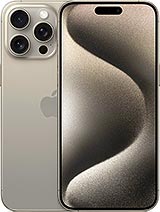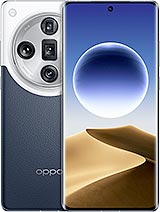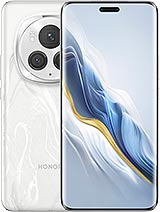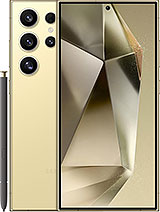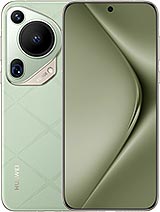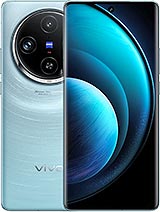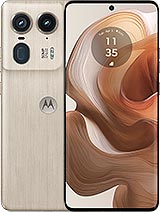Google Pixel 9 Pro XL review
Super Actua display is super-brighter still, slightly larger too
The Pixel 9 Pro XL brings some display upgrades over the previous generation. For one, the OLED panel is now just a tiny bit larger, the 6.8-inch diagonal making for a better separation from the 6.3-inch 9 Pro non-XL (the old 8 Pro had a 6.7-inch display). The other development is the higher peak brightness, now specified at 3,000nits (up from 2,400).
The display has the same resolution as before - a rather non-typical 1,344x2,992px in a more or less standard 20:9 aspect ratio, while the pixel density now works out to 486ppi. It remains an 8-bit panel for up to 16 million colors, while some competitors have moved to 10-bit and even 12-bit displays (well, maybe not Samsung, but still). The maximum refresh on the 9 Pro XL is 120Hz.
Circling back to brightness, we measured a remarkable 2,365nits on the Pixel 9 Pro XL in adaptive brightness mode with the phone placed under bright light for our standardized 75% patch. That's a significant increase over the previous generation and notably brighter than anything else we've seen from a recent flagship phone.
Perhaps even more impressive is the Pixel's maximum brightness that you can get manually - over 1,300nits at the rightmost end of the slider. Compare that to the 700-800nits ballpark of the other phones on the list.
Refresh rate
Google calls its best displays Super Actua, and the 'Super' stands for LTPO - the Pixel 9 Pro and Pro XL can dynamically vary their refresh rate in the 1Hz to 120Hz range.
In contrast, the 9 non-Pro has an Actua display (minus the 'Super' part), and it can only switch between fixed 120Hz and 60Hz values. Either way, there's just a toggle for 'Smooth display' in settings - no selection of modes or anything - and it comes turned off out of the box.
The Pixel 9 Pro XL was happy to maintain 120Hz when gaming, for both 2D arcade titles and 3D games we tried - when Smooth display was enabled, of course. Outside of gaming, the Pixel would maintain 120Hz in browsers or social apps when you're scrolling or there's high fps moving content (even when you're not touching the display), but will dial down to 1Hz for static content when there's no interaction.
Streaming and HDR
The Pixel 9 Pro XL supports HDR10 and HDR10+, but stops short of offering Dolby Vision. We got HDR streams in both YouTube and Netflix, with Netflix also allowing FullHD resolution thanks to the Widevine L1 certification.
You can also count on the Pixel 9 Pro XL to display Ultra HDR-compliant images with boosted highlights - both its own photos in the Google Photos gallery, as well as other compatible phone images online in browsers or socials.
Google Pixel 9 Pro XL battery life
The Pixel 9 Pro XL comes with a 5,060mAh battery inside - an insignificant increase from the 8 Pro's 5,050mAh number. The Galaxy S24 Ultra has essentially the same battery capacity, at 5,000mAh, as do some other high-end Androids like the Xiaomi 14 Ultra, though numbers in the 5,400-5,600mAh region aren't unheard of either. The iPhone 15 Pro Max, meanwhile, stands at 4,441mAh.
In our testing, the Pixel 9 Pro XL did a fine job... for a Pixel. We clocked meaningful improvements in both web browsing (12:18h, up from 10:34h, 16%) and video playback (14:35h, up from 12:18h, 19%), and a nudge up in gaming. Call time, meanwhile, has remained virtually unchanged.
Overall, our Active Use Score shows a meaningful step up, but the large Pixel remains behind its competition when it comes to endurance.
Our new Active Use Score is an estimate of how long the battery will last if you use the device with a mix of all four test activities. You can adjust the calculation based on your usage pattern using the sliders below. You can read about our current battery life testing procedure here. For a comprehensive list of all tested devices so far, head this way.
Charging speed
For this generation of Pixels, Google is introducing a new charger - a 45W Power Delivery unit that can deliver the 37W that the Pixel 9 Pro XL is rated for. The Pixel 8 Pro only maxed out at 27W so the existing 30W adapter was about good enough, but a new brick was needed this year.
That said, we didn't have access to that new adapter, so for the purposes of timing the phone's charging speed we had to make do with what we had lying around. Historically, Pixels have played nicely with the Samsung 45W adapter, and its specs are indeed very close to the numbers on the Google 45W adapter.
Using the Samsung charger (the EP-T4510, to be precise), we measured 67% at the half-hour mark - Google says 70% in 'about 30 minutes', so we're sort of there, even without using their own adapter. A full charge took us 1:18h - 5 minutes quicker than what we had gotten on the 8 Pro. Our power meter said the two devices had negotiated 37W while the actual transferred power was around 33W - that went on for a few minutes too.
The Pixel 9 Pro XL supports wireless charging too. You'll get the fastest results with the Pixel Stand (2nd gen) - up to 23W. Using generic Qi-compliant pads that adhere to the Extended Power Profile specs, you'll get up to 12W. There's also support for wireless charging of other devices off of the Pixel 9 Pro XL's back - the Battery Share feature.
Speaker test
The Pixel 9 Pro XL employs a dual speaker setup with a main unit outputting out of the bottom of the phone and a front-firing one above the display that also serves as an earpiece. The phone will assign the channels dynamically depending on its orientation in space. As Google normally goes about this, each speaker will also output the other channel's track as well, at a lower volume.
In our testing, the integrated loudness result was good enough to push the 9 Pro XL into 'Very Good' territory, a notch up from the previous generation and in the same boat as the Galaxy S24 ultra and the iPhone 15 Pro Max.
We'd say that the 9 Pro XL is tuned slightly differently compared to the 8 Pro, but the differences are minimal - perhaps marginally toned down low-end presence in some tracks and less enthusiastic vocals here or there - we wouldn't call it an improvement, but rather a side step. We'd still argue that the iPhone has the edge here, and maybe the Galaxy does too.
Use the Playback controls to listen to the phone sample recordings (best use headphones). We measure the average loudness of the speakers in LUFS. A lower absolute value means a louder sound. A look at the frequency response chart will tell you how far off the ideal "0db" flat line is the reproduction of the bass, treble, and mid frequencies. You can add more phones to compare how they differ. The scores and ratings are not comparable with our older loudspeaker test. Learn more about how we test here.
Reader comments
- jeLo
- 02 May 2025
- y6V
is there a flagship store here in the Philippines for Google pixel? which is better, Google pixel9 pro xl or Samsung a56? can u give an insight.. looking for a cellphone which has nice camera.. big thanks!
- Anonymous
- 03 Mar 2025
- krZ
I just got One, And i totally Love this Phone. It has Everything I Seem to need 👍
